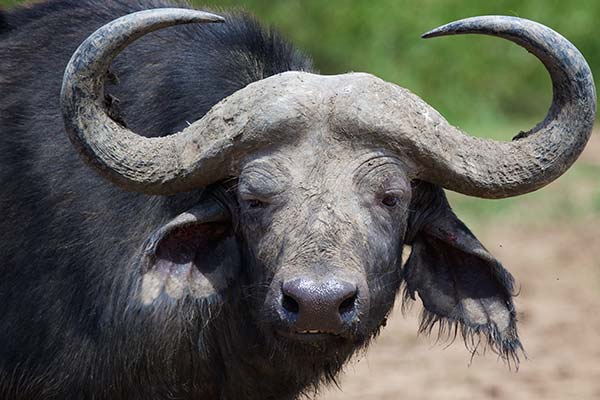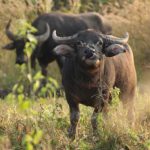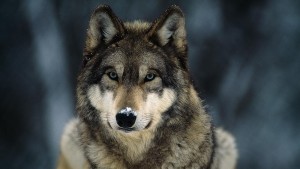Wild Water Buffalo’s Little Facts
Wild Water Buffalo
The wild water buffalo, also called Asian buffalo and Asiatic buffalo, is a large bovine native to the Indian Subcontinent and Southeast Asia. It is listed as Endangered in the IUCN Red List since 1986, as the remaining population totals less than 4, 000, with an estimate of fewer than 2, 500 mature individuals. The population decline of at least 50% over the last three generations (24–30 years) is projected to continue. The global population has been estimated at 3, 400 individuals, of which 3, 100 (91%) live in India, mostly in Assam. The wild water buffalo represents most likely the ancestor of the domestic water buffalo.
Characteristics
Wild water buffalo are larger and heavier than domestic buffalo and weigh from 700 to 1200 kg. Their head-to-body-length is 240 to 300 cm with a tail 60 to 100 cm long, and a shoulder height of 150 to 190 cm. Both sexes carry horns that are heavy at the base and widely spreading up to 2 m along the outer edges, exceeding in size the horns of any other living bovid. Their skin color is ash gray to black. The moderately long, coarse and sparse hair is directed forward from the haunches to the long and narrow head. There is a tuft on the forehead, and the ears are comparatively small. The tip of the tail is bushy; the hooves are large and splayed.
They rank alongside the gauras the heaviest living wild bovid species, as both attain similar average if not maximum weights, although, with their stockier, shorter-legged frame, wild water buffalo are somewhat less in length and height than the gaur.
Read the full article on Thai National Parks Website
How to Draw a Wild Water Buffalo
Wild Water Buffaloes Rule!
Written by Luca, 3rd grade. Midtown International School (MIS)
Wild Water Buffalo are endangered animals with only 4,000 of them remaining. They are soft and gentle creatures who help humans pull wood.
These buffalo live in the Indian Subcontinent. The population has decreased 50% over the last 30 years leaving us with so few. There are several reasons they are endangered. One main reason they have been interbred with domestic buffalo. People also hunt the wild buffalo and trade them illegally. They have lost their habitat because people build houses and buildings. Lastly, because wild water buffalo they caught more parasites and diseases.
Humans should be aware of how their actions affect our ecosystems. We are in danger of losing the wild water buffalo forever.
Our world depends on you!
Wolf’s Little Facts
Wolves live in groups called packs. The wolves’ communication skills are very important to the pack’s survival. Wolves work together to hunt, raise their young, and protect their territory. Wolves communicate with more than howls! They whimper and whine, growl and bark, yelp and snarl. They also use scents produced by their bodies to communicate. One source of scent is urine, which they use to mark territory and to tell other wolves in their own pack where they are. Another way wolves communicate is through body language. If a wolf feels confident, it will approach another wolf with its head and tail held high and ears perked up. If you saw a wolf slinking toward another with its body lowered, its tail between its legs, and its ears flattened, you’d know it was approaching a dominant animal.
When a wolf wants to play, it prances about happily and bows—lowering the front of its body while its rump stays up in the air with its tail wagging. A wolf’s body language may remind you of another animal: a pet dog. Wolves and dogs are closely related, and the ways they communicate are similar.
Young wolves stay in their parents’ pack for at least two or three years before some of them take off to join other packs or to start their own. Wolf pups play a lot as they’re growing. They leap and pounce, chase and wrestle, play hide-and-seek and tag—a lot like you do!
In some areas, gray wolfs are classified as endangered, but in most places they are classified as having healthy population numbers.
- 1
- 2
- 3
- …
- 5
- Next Page »





